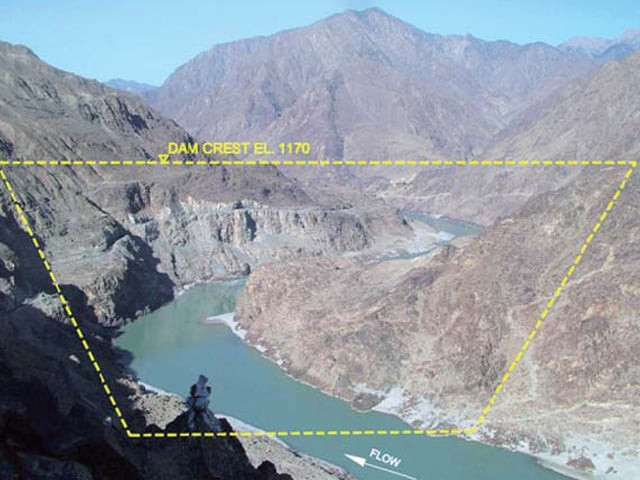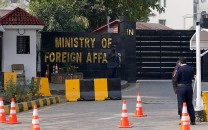Diamer-Bhasha project: Boundary dispute threatens scheme
Construction yet to start as K-P and G-B do not agree on their border.

The government has secured the agreement of the cabinet, the provinces, the international lenders, and the more than 30,000 families who would be affected by its construction, but the Rs1 trillion Diamer-Bhasha dam project may yet be scuttled because of a boundary dispute between Khyber-Pakhtunkhwa and Gilgit-Baltistan.
Sources in the Water and Power Development Authority (Wapda) told The Express Tribune that Prime Minister Yousaf Raza Gilani had directed them to start work on the Diamer Bhasha dam, even without the settlement of the boundary issue, which he said could be resolved later.
But the dispute refuses to die down, forcing Wapda to postpone its groundbreaking ceremony for the project twice in the last three weeks. Wapda officials are reluctant to move ahead with the project without resolving the issue first, fearing that the matter could become worse once construction starts with the boundary dispute unresolved.
The government has obtained formal approval from the Council of Common Interest (CCI) – a body that includes representatives from all the provinces and the federal government – for the project, in line with the Asian Development Bank’s recommendation. The ADB had feared that Diamer Bhasha might turn into another Kalabagh dam, a project which fell victim to stiff political opposition.
Gilgit-Baltistan has representation on the CCI, but the council only considered whether or not to build the dam, not any of its details. The region is in favour of the dam being built and its objections over the boundary issue reflect a desire to get what it feels is its deserved share of the lucrative royalties from the project once it starts producing hydroelectric power.
Sources say that while a consensus on the boundary issue has not yet emerged, a proposal is being worked out under which Gilgit-Baltistan would be guaranteed significant royalties, regardless of which way the border issue is resolved.
“A proposal is under consideration under which three powerhouses would be set up on the dam – one in Gilgit-Baltistan and two in Khyber-Pakhtunkhwa, with royalties split accordingly,” said one source familiar with the matter. Meanwhile, a ministerial committee constituted by the prime minister to deal with the Diamer Bhasha project has asked the Supreme Court to create a judicial commission to resolve the boundary dispute.
The committee has also signed a Rs40 billion out-of-court settlement with the people who would be displaced by the dam – approximately 30,000 families in 31 villages. The dam will inundate 37,000 acres, of which the government will have to compensate the owners of 18,000 acres.
The compensation amount has raised some questions, since the executive committee of the National Economic Council – the nation’s highest economic decision-making body – had determined the settlement at Rs26 billion. This amount was later revised upwards to Rs58 billion, before the ministerial committee revised it downwards to Rs40 billion. The amount will be disbursed to the families over three years.
The German firm consulting on the project, Lehmar, recommended allotting 151.3 square yards to every family for their residence and 3,630 square yards (about three-quarters of an acre) for agricultural purposes.
According to the design submitted to Wapda, the dam would have a capacity to produce up to 4,500 megawatts of electricity. Its water storage capacity would be up to 7.5 million acre feet (MAF). The three power plants are likely to have a maximum capacity of 1,150 MW each. Income generated from selling the electricity produced by those power plants would be given to Khyber-Pakhtunkhwa and Gilgit-Baltistan as royalties.
Published in The Express Tribune, June 15th, 2011.



















COMMENTS
Comments are moderated and generally will be posted if they are on-topic and not abusive.
For more information, please see our Comments FAQ